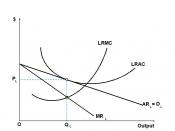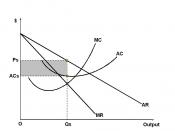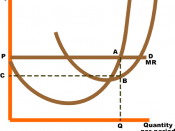Profit maximisation has been one of the main aims of the firms. The generally accepted view is the long run will wish to maximize profit. Marginal Cost and Marginal Revenue can be used to find the profit maximising level of output. Marginal cost is the addition to total cost of one extra unit of output. Marginal revenue is the increase in total revenue resulting from an extra unit of sales. Economic theory predicts that profits will be maximised at the output level where marginal cost equals maginal revenue (MC=MR). This is the point where firms will decide to produce.
The control of firms is likely to lie with one or more of the firm's stakeholders. It might seem obvious to state that it is the owners or shareholders of a company who control it. This is perhaps true for small businesses where the owner is also the director or manager of the business.
The owner of a small local corner shop, for instance, who also runs the shop will make the decisions about the business. However, it is less obvious that owners control the business they own when there is a very large number of shareholders.
Apart from the shareholders, the are also other stakeholders in business. Shareholders in a public limited company elect directors to look after their interests. Directors in turn appoint managers who are responsible for the day to day running of the business. Therefore there may be a divorce between ownership and control. The only way in which owners can influence decision making directly is by sacking directors at the Annual General Meeting of the company. In practice the company needs to be going bankrupt to stir sufficient shareholders for this to happen. Shareholders can also sell their shares, forcing the share price down and making...


